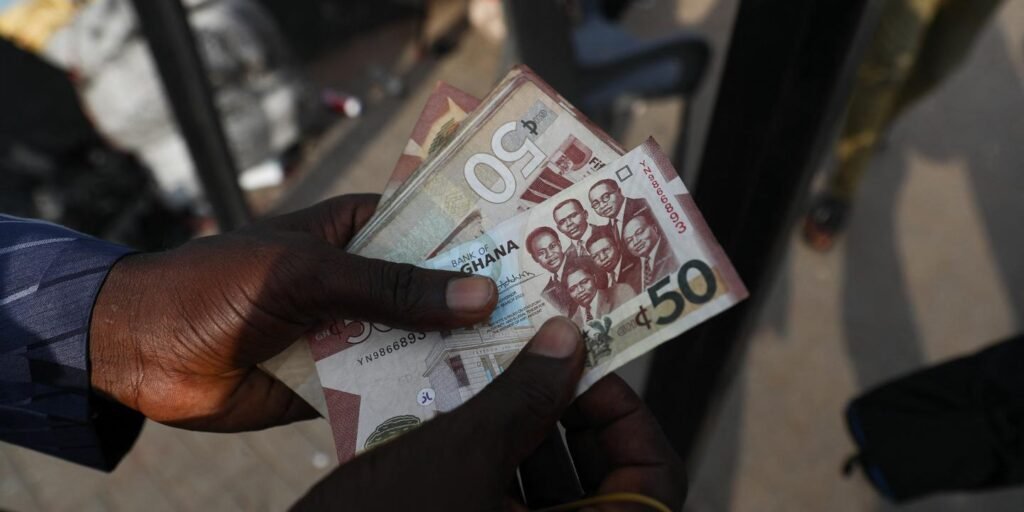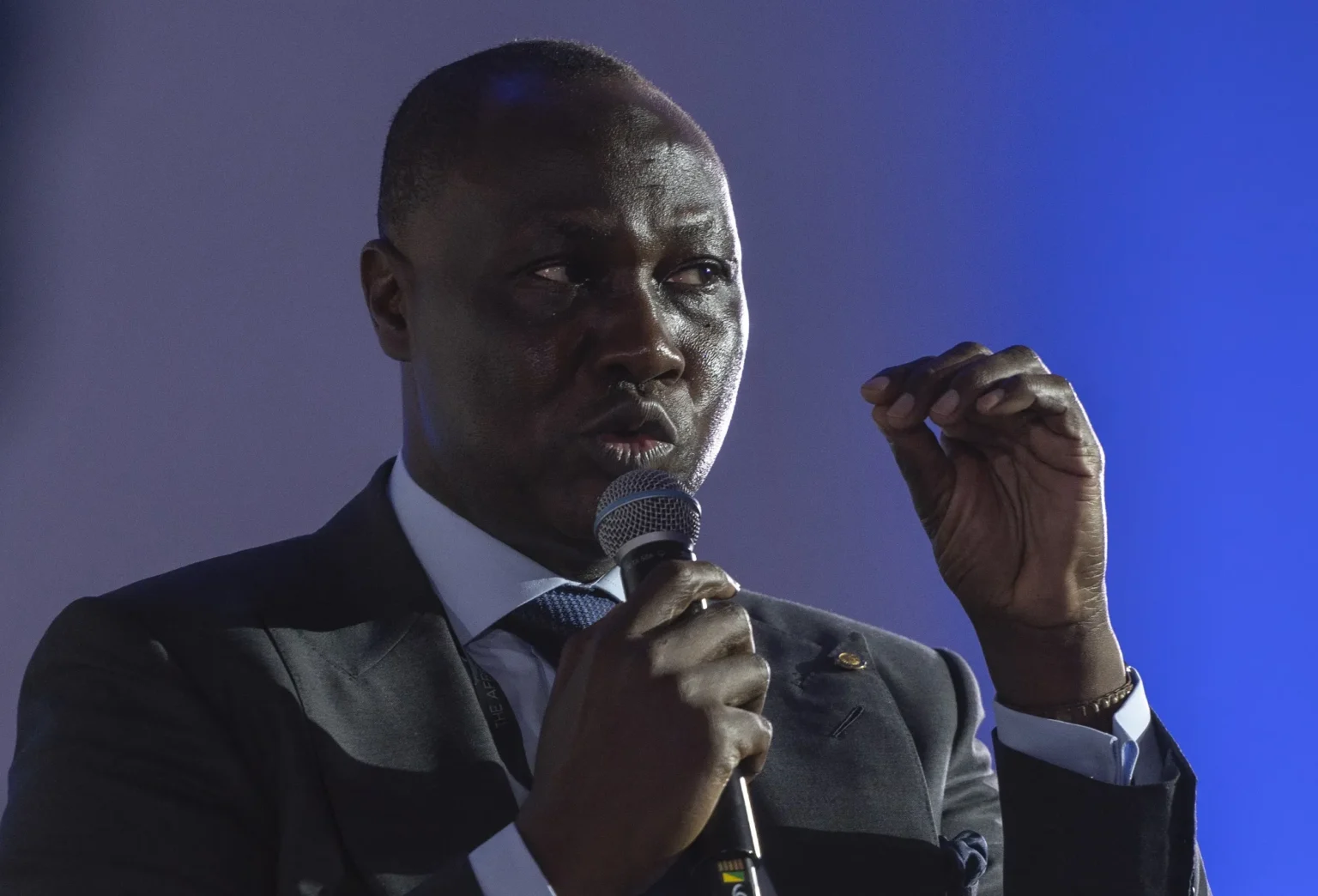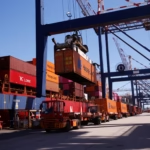Financial markets are right to be wary of certain African risks. Coups d’état in the Sahel, recent sovereign defaults, currency volatility: there is no shortage of reasons for concern. But are they right to price these risks three times higher than equivalent risks elsewhere in the world?
- The accusation: when Africa denounces a biased system
- The Quantitative Anatomy of Systemic Mispricing
- Elements that can help website visual composition
- The “Continental Ceiling” Effect
- Credit Rating Systems Under Fire
- Who Really Wins from the System?
- The Sovereign Wealth Fund Paradox
- The Limits of Africa’s Pushback
- Fixing the Mispricing: What Can Be Done?
- Between Protection and Predation
The prejudice premium Africa has paid is $75 billion annually. That’s a lot of
Samaila Zubairu, Africa Finance Corporation’s president
money.
This is the explosive problem raised by Samaila Zubairu, president of the Africa Finance Corporation, at an event in Johannesburg in early August. According to him, the ‘prejudice premium’ costs the African continent $75 billion (approximately €64 billion) per year. This accusation raises a deeper question: does this systemic
overvaluation reveal a dysfunction in pricing mechanisms, or is it deliberately maintained by the international financial architecture?
The accusation: when Africa denounces a biased system
‘These default rates are really, really exaggerated,’ Samaila Zubairu insists to investors gathered in Johannesburg. His thesis is simple but devastating: financial markets systematically overestimate African risk, creating an annual cost of $75 billion for the continent’s economies.

The argument is not new, but the figures are staggering. To put it into context, this “prejudice premium” is equivalent to Kenya’s GDP. It is enough to finance the electrification of 300 million Africans or build 50,000 kilometres of paved roads. Ndidi Okonkwo, president of the One Campaign organisation, was also present at
the event. According to her reported statements.
For the last three decades, return on infrastructure investments in Africa was six times that of the S&P 500…Yes, there is risk but there is return.
A striking paradox: the continent that generates the best returns pays the highest rates.
The Quantitative Anatomy of Systemic Mispricing
An econometric study by the African Development Bank reveals a persistent gap between the risk premiums (spreads) demanded on African debt and the continent’s actual macroeconomic indicators. In other words, a significant portion of the additional cost imposed on African countries cannot be explained by their levels of
debt, fiscal deficits, or political instability.
This “unexplained premium” or residual spread appears to result from a herding effect, where investors behave mimetically and treat the continent as a monolithic bloc, ignoring the diversity of economic trajectories. The analysis shows that this systemic overpricing is further reinforced by:
- Persistent rating biases, with agencies often refusing to upgrade certain countries beyond an implicit ceiling
- Low liquidity in secondary markets, which drives up required premiums
- Artificial correlations between African countries, amplified by the construction of global indices (such as MSCI and EMBI)
Elements that can help website visual composition
Fewer Defaults Than Elsewhere Data compiled by Moody’s shows that default rates on infrastructure projects are actually lower in Africa than in most other regions:
- Africa: 5.5%
- Western Europe: 5.9%
- Asia: 8.5%
- Latin America: 12.9%
A striking paradox: the continent with one of the best repayment records is nonetheless charged the highest risk premiums.
The Rise of Private Creditors According to figures reported by Bloomberg, the share of private creditors in Africa’s external debt rose from 30% in 2010 to 44% in 2021. This shift has changed the equation: while public lenders often consider development goals, private investors focus solely on maximizing returns. In this context, a heightened
perception of risk becomes… profitable.
The “Continental Ceiling” Effect
A perverse mechanism fuels this distortion: artificial regional contagion. When Ghana faces difficulties, the entire continent sees its spreads rise. A stable Rwanda pays for Mali’s instability. An exemplary Botswana suffers the fallout from turmoil in the Sahel.
This bias, sometimes referred to as the “continental ceiling effect”, illustrates how markets treat Africa as a single, homogeneous bloc, a lens they do not apply to Latin America or Asia.
Even the highest-rated African countries, such as Botswana or Morocco, are charged higher interest rates than comparable emerging economies elsewhere, despite similar or lower risk profiles.
Credit Rating Systems Under Fire
Questionable Methodologies
International credit rating agencies, Fitch, Moody’s, and S&P, have come under regular criticism from African leaders for a lack of transparency. Ghana’s President Nana Akufo-Addo notably denounced Moody’s and S&P’s ratings as “irrational” in 2022.
Botswana’s case raises questions: a stable democracy for over 50 years, strong governance, and significant foreign reserves, yet rated A- by S&P, three notches below Italy (BBB), despite Italy’s far higher debt levels. Is there an implicit ceiling embedded in how agencies rate African countries?
The Informal Economy: A Blind Spot
The formalization of the massive informal sector becomes a necessity, because doing so will provide data to show that things are not as they claim. According to the World Bank, the informal economy accounts for as much as 60–70% of GDP in some African countries. Lacking reliable data, this crucial segment of economic
activity remains invisible to rating models, mechanically fueling uncertainty, and justifying a higher risk premium.
Who Really Wins from the System?
Africa pays more to access capital, but the overpricing of risk is far from accidental. In fact, it fuels a lucrative ecosystem where key financial players reap tangible benefits from sustained market scepticism. Investment banks charge higher fees on African bond issuances, leveraging risk narratives to justify steeper margins. Hedge funds profit from volatility spikes, executing speculative trades that turn uncertainty into opportunity. Asset managers secure outsized returns, thanks to elevated yields that compensate for perceived, but not always real danger. Credit rating agencies, meanwhile, multiply sovereign assessments, often bundling
them with advisory services that reinforce their gatekeeping role.
In this system, doubt has become a business model. The more Africa is seen as risky, fairly or not, the more profitable it becomes for the institutions that amplify that very perception.
The Sovereign Wealth Fund Paradox
Africa’s own sovereign wealth funds tell a revealing story. In 2024, Botswana’s Pula Fund managed around $3.5 billion, equivalent to 20% of the country’s GDP, mostly parked in foreign assets for diversification and safety. Nigeria’s Sovereign Investment Authority (NSIA) held approximately $2.4 billion, similarly weighted toward international instruments through its stabilization funds.
While this outward-looking strategy makes sense from a risk management standpoint, it also sends an implicit signal: if even African states place their wealth offshore, why should global investors have confidence in African markets? This creates a subtle but powerful paradox, where defensive diversification unintentionally reinforces the very risk perceptions African economies seek to correct.
The Limits of Africa’s Pushback
Real Risks Do Exist For the critique to hold weight, it must acknowledge the risks that are not fabricated by markets:
- Political instability is a genuine concern in several regions (e.g. the Sahel, the Horn of Africa).
- Currency risks are exacerbated by monetary volatility (the Nigerian naira has lost 70% of its value against the dollar, the Ghanaian cedi remains under pressure).
- Low liquidity in African capital markets justifies a portion of the higher premiums applied.
A Structural Handicap
African markets face a fundamental structural challenge: selling a Kenyan bond can take days, whereas a U.S. Treasury bill finds buyers in seconds. This lack of liquidity naturally drives up the risk premium. However, these risks are not unique to Africa. Other regions face comparable vulnerabilities without facing such extreme interest rate spreads.
Fixing the Mispricing: What Can Be Done?
The “prejudice premium” isn’t inevitable. If the mispricing of African risk stems
from data blind spots, structural weaknesses, and perception bias, then the remedy
lies in addressing each of those flaws, head-on.
- Bring the Informal Economy into the Light Africa’s vast informal sector, often invisible to global models, holds real economic weight. By improving data collection and integrating it into risk assessment frameworks, governments can reduce the uncertainty that drives up risk premiums.
- Build Deeper Financial Markets
Liquidity matters. The ability to buy and sell assets quickly reduces investor hesitation, and with it, the cost of borrowing. Africa’s capital markets need depth, diversity, and the tools that make them competitive with other emerging regions. - Rethink Credit Ratings
The dominance of three global rating agencies leaves little room for contextual nuance. Africa needs credible, transparent alternatives, built for its own realities, that can challenge blanket assumptions and reflect real risk, not reputation. - Fintech: A Possible Disruptor
Technology could tip the balance. Blockchain enhances transparency. AI-powered models can analyze satellite imagery, mobile transactions, and call data to surface insights that traditional financial metrics miss. In short: better data could mean fairer pricing.
Between Protection and Predation
The warning from the Africa Finance Corporation deserves more than polite applause, it demands a reckoning. The €64 billion in excess annual cost isn’t a rhetorical flourish. It signals a profound distortion in how African risk is priced. Africa carries real risks, political, monetary, structural. But the evidence
increasingly points to an overpricing of those risks, not grounded in fundamentals, but inflated by perception.
The so-called “prejudice premium” has become a mechanism through which doubt is monetized, and where Africa pays not for what it is, but for what others fear it might become. This isn’t simply a story of caution gone too far. It’s the architecture of a financial ecosystem where prudence blurs into opportunism, a system where uncertainty is no longer something to reduce, but something to sell.
The task ahead is not to eliminate the risk premium. It is to strip it down to what is justified, anchored in real data, not legacy bias. Because as it stands today, Africa is paying too much, too often, for risks it does not own alone.





